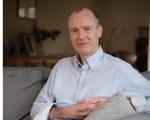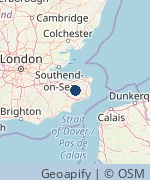The Neuroscience Revolution and Improving Sports Performance
John Black
- Organisation:
- Beechwood Therapy
- Region:
- Anywhere
- Notice Period:
- Emergency (maybe less than one week's notice)
- Type:
- Professional
- Fee:
- Paid
- Category:
- Science
- Updated:
- 29th January 2025
- Tagged:
- Neuroscience | Sports Performance | Sports | Health
Join us for a fascinating talk by John on neuroscience and improving sports performance, and discover how understanding the brain can enhance athletic ability. John, n experience therapist and coach, will explore how cutting-edge brain research is revolutionising the way athletes train and perform.
In this engaging session, John will explain how the brain plays a key role in motor skills, decision-making, focus, and reaction time—factors that directly influence sports performance. You’ll learn how athletes can harness the power of neuroscience to optimise mental clarity, increase resilience, and sharpen their physical responses during high-pressure moments.
John will also introduce practical strategies, such as visualisation techniques and neuroplasticity training, which can help athletes improve focus, reduce performance anxiety, and recover faster from mistakes or injuries. These techniques are designed to help both amateur and professional athletes maximise their potential by training not only their bodies but their brains.
Whether you’re an athlete looking to enhance your performance, a coach seeking innovative training methods, or simply curious about the connection between brain science and sports, this talk will offer invaluable insights into the future of athletic success. Don’t miss this opportunity to learn how neuroscience can take your sports performance to the next level!
See his website at www.beechwoodtherapy.co.uk
Views: 576 | Enquiries: 0About John Black
John from Beechwood Therapy is a qualified psychotherapist and hypnotherapist. His background is in secondary education where he worked for many years training teachers, as an Assistant Headteacher and in Children's Safeguarding. It was his background in children's welfare that led him to explore therapy as he saw an explosion in Anxiety amongst young people. He now works with people of all ages to tackle a range of issues from anxiety to weight management, from PTSD to pain management and phobias.
See his website at www.beechwoodtherapy.co.uk
Other Talks on SpeakerNet by John Black
- Hypnosis and Hypnotherapy
- The Anxiety Epidemic
- Stress and how to deal with it
- Brain Science as the key to our Mental Health
- Therapeutic Approaches to Obsessive Compulsive Disorder - OCD
- Phobias. What are they and how to overcome them...
- How to deal with Anxiety.
- Hypnosis Myths. What actually is hypnosis?
- Trauma! Dealing with and moving on from trauma.
- Successful Weight Management. Body and Mind.
- Chronic Stress and Burnout!
- Mental Health and Teenagers.
- Neuroscience and Mental Health
- Thought Patterns and Mental Health
- Insomnia and how to overcome it.
- Toxic Positivity? Is thinking more positively really the way forward?
- Sleep and your mental health.
- Milton H. Erickson and Psychotherapy. Maverick? Trailblazer? Genius?
- Irritable Bowel Syndrome (IBS) and Your Mind
- How to get Rid of Tinnitus (or Dramatically Reduce It).
- How to Overcome Panic Attacks.
- Overcoming Gambling Addiction
- Transforming Relationships. Better family, professional and romantic relationships.
- The Power of Relaxation
- Overcoming Bullying. Improving Mental Health with Solutions.
- Dealing Effectively with Grief.
- Key Ways to Increase Conception / Pregnancy.
- A Fascinating History of Hypnosis.
Send a message to the speaker
If you are interested in this talk and wish to contact the speaker, please complete the following form:


